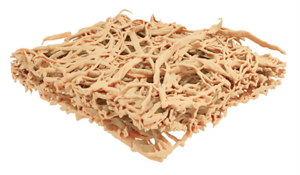
FIBERBOND (2024-2028)
Cellulosic fibre mats with improved fibre bonds towards lighter, stronger and stretchable bio-based material

The aim of the FiberBond project is to significantly improve the strength and deformation at break of wet-formed cellulose fibre mats, in order to reduce the consumption of materials, water and energy, and to give them new 3D formability properties.
Aim of the project
The objectives are to quantify the contributions of fibre properties (morphology, chemical composition, charge density, flexibility modified by refining) and papermaking parameters (wet pressing, shrinkage on free/stressed drying) to improving the contact surface between fibres and the resulting mechanical properties. The impact of the type of bond between fibres (hydrogen, Coulomb, covalent) will also be studied. New experimental approaches developed by the consortium will be used :
- Fibre fractionation according to wall thickness,
- Increasing fibre flexibility by refining without fibrillation,
- Quantification of contact zones and capillary phenomena in fibrous media,
- Study of the evolution of cellulose structure,
- Chemical modification of the surface of cellulose materials,
- Measurement of adhesion forces.
The objective of the FIBREBOND project is to study, quantify and model the contributions of the fibre properties (morphology, chemical composition, charge density, flexibility modified by refining or chemical surface treatments) and process parameters (wet pressing, free/restrained shrinkage) to the improvement of the contact area, as well as the contribution of modified fibre surfaces (charged or able to form hemiacetal or ester bonds) to the improvement of bond strength and toughness, by using novel experimental approaches.
 |
 |
| Fibre mat observed using X-ray tomography to measure contact areas. | |
